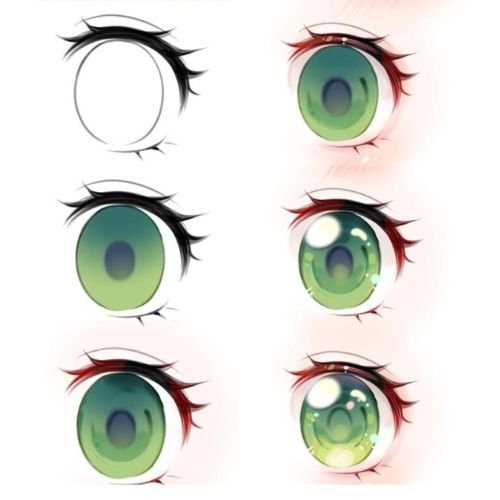
Unleash your inner artist and dive into the captivating world of chibi eye drawing! As an experienced human writer, I’m thrilled to share my tips and techniques to help you master this adorable and expressive style. Get ready to create charming, eye-catching chibi characters that will captivate your audience.
Understanding the Basics of Chibi Style
Chibi eyes are a unique and endearing style of drawing that originated in Japanese anime and manga. These oversized, expressive eyes are a hallmark of the chibi art form, capturing the essence of cuteness and personality in a single glance. Whether you’re a seasoned artist or just starting your creative journey, learning to draw chibi eyes is a must-have skill that will add a delightful touch to your illustrations.
Before we dive into the step-by-step guide, it’s important to grasp the fundamentals of the chibi style. Chibi characters are typically characterized by their large, expressive eyes, rounded features, and diminutive stature. The exaggerated proportions and whimsical nature of chibi art create a sense of endearing charm and playfulness. By understanding these core elements, you’ll be able to infuse your chibi eye drawings with the perfect balance of cuteness and personality.
Step-by-Step Guide to Drawing Chibi Eyes
Now, let’s get started on the exciting journey of drawing chibi eyes! Follow along as I guide you through a detailed, step-by-step process to bring these adorable peepers to life.
Sketch the Basic Shape: Begin by lightly sketching the basic shape of the chibi eye. Chibi eyes are typically larger and more rounded than realistic eyes, with a gentle curve at the top and bottom.
Define the Eyelid and Lashes: Carefully draw the eyelid, ensuring it has a soft, rounded appearance. Add delicate lashes to frame the eye and enhance the overall expression.
Create the Iris and Pupil: Within the eye shape, draw the iris and pupil. Chibi eyes often feature exaggerated irises that take up a significant portion of the eye area.
Refine the Details: Fine-tune the details of the eye, such as the highlights, shadows, and any additional elements like sparkles or reflections. These small touches will bring your chibi eye to life.
Adding Expressions and Emotions to Chibi Eyes
One of the most captivating aspects of chibi eye drawing is the ability to convey a wide range of emotions and expressions. By understanding the subtle nuances of eye shape, placement, and accompanying features, you can breathe life into your chibi characters and create truly engaging illustrations.
Experiment with different eye shapes, such as wide-open eyes for surprise, half-lidded eyes for a calm and relaxed expression, or squinted eyes for a mischievous grin. Adjust the position and angle of the eyes to suggest various moods, from playful and energetic to thoughtful and introspective.
Remember, the eyes are the windows to the soul, and in the world of chibi art, they are the key to unlocking the personality and charm of your creations.
Common Mistakes to Avoid When Drawing Chibi Eyes
While the process of drawing chibi eyes may seem straightforward, there are a few common pitfalls to watch out for:
Disproportionate Sizing: Ensure that the eyes are in the correct proportion to the rest of the facial features. Overly large or small eyes can throw off the balance and visual appeal of your chibi character.
Lack of Expressiveness: Chibi eyes are known for their emotive and engaging qualities. Avoid flat, lifeless eyes by experimenting with different shapes, placements, and accompanying features to capture the desired expression.
Inconsistent Styling: Maintain a consistent chibi art style throughout your drawings. Avoid mixing realistic elements with exaggerated chibi features, as this can create a disjointed and confusing visual.
Overuse of Accessories: While embellishments can add charm, be mindful not to overload your chibi eyes with too many accessories. Keep the focus on the eyes themselves and use decorative elements sparingly.
Advanced Techniques for Shading and Highlighting Chibi Eyes
As you progress in your chibi eye drawing journey, exploring advanced shading and highlighting techniques can take your artwork to the next level. Experiment with a variety of media, such as colored pencils, markers, or digital painting tools, to create striking contrasts and depth within the eye area.
Utilize soft, blended shading to suggest the curvature of the eye and eyelid, while strategically placed highlights can make your chibi eyes sparkle with life. Experiment with different lighting scenarios and shadow patterns to add a sense of dimension and realism to your drawings.
Congratulations! You’ve now embarked on an exciting journey to master the art of drawing chibi eyes. By understanding the fundamentals, exploring step-by-step techniques, and honing your skills through practice and experimentation, you’ll be well on your way to creating captivating, expressive chibi characters that will delight and enchant your audience.














